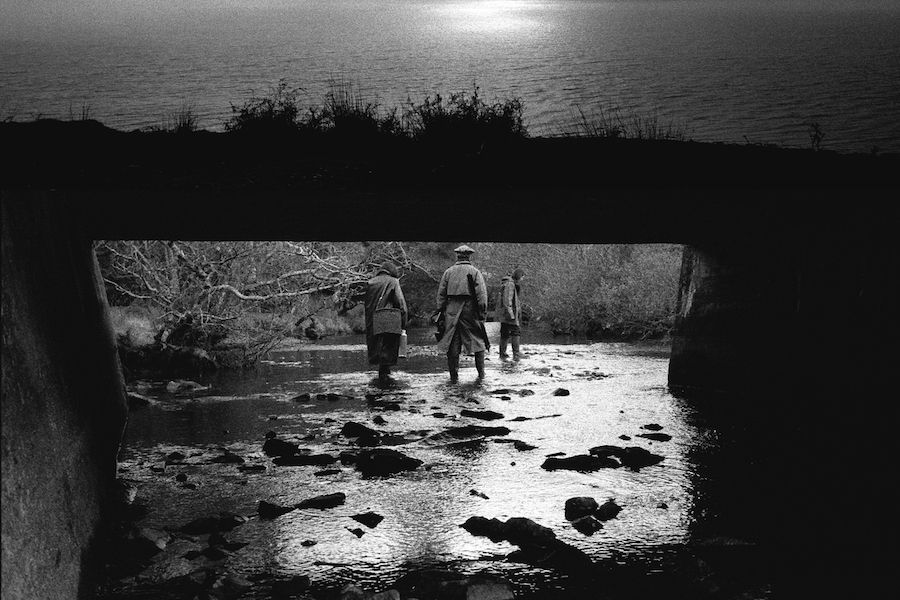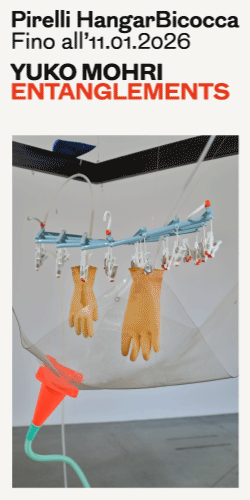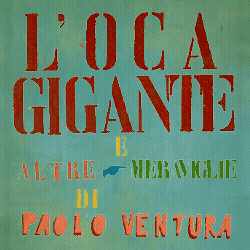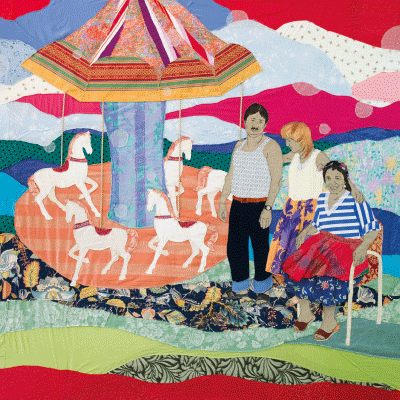[nemus_slider id=”43371″]
Se Raymond Williams avesse dovuto scegliere un’altra voce per il suo celebre testo Keywords, oggi avrebbe sicuramente incluso la parola “Singolarità”. Il termine si riferisce al momento in cui le intelligenze artificiali supereranno le capacità e il controllo dell’uomo. Il regista Albert Serra è partito da questo complesso concetto per sviluppare il suo nuovo film “Singularity”, presentato ai Cantieri Navali (Via Castello 40) a Venezia come evento collaterale “Catalonia in Venice” a cura di Chus Martìnez.
Indagando come le immagini agiscono in contesti diversi, il progetto presenta al pubblico uno spazio filmico che esplora il campo delle “applicazioni” della nozione di singolarità in ambito cinematografico. Questo concetto rappresenta un punto di svolta nel nostro rapporto con le informazioni, la “materia”, le immagini prodotte dalle macchine, le loro forme di rappresentazione. “Singularity” celebra una nuova era in cui questi dualismi non esistono più. Un universo creato con la macchina, un bagaglio di conoscenze in grado di alterare i nostri sogni, l’immagine che abbiamo e avremo del mondo. Il testo che presenta la video installazione scritto dalla curatrice, termina con una domanda: “come fa la macchina da presa a riprodurre la mente umana?”
“Singularity” consiste in un film suddiviso in episodi che propone una conciliazione tra il XX e il XXI secolo, tra quanto è conosciuto e quanto è singolare. È un’installazione audiovisiva che consiste in sei diverse proiezioni su altrettanti grandi schermi installati nello spazio. Ogni schermo ricostruisce una singolare storia di immagini generate dalle macchine: una rivisitazione personale dell’arte e del cinema; immagini grafiche ottenute da conversioni numeriche; immagini costruite (in maniera teatrale) che si allontanano dalla macchina da presa e si avvicinano gradualmente; immagini espressive che illustrano una parola ecc. Lo studio della natura di un’immagine, il suo trattamento cinematografico (sia narrativo sia meccanico) ci racconta un’esperienza, attraverso i diversi schermi, del percorso evolutivo di un concetto, le immagini stesse che si rigenerano senza una causa e senza un fine.
Il progetto comprende anche una pubblicazione co-realizzata dall’Istitut Ramon Llull e dalla rivista d’arte Mousse scaricabile a questo link ?
Segue una breve intervista con il regista.
ATP: Cosa significa il titolo, “Singularity”?
Albert Serra: Si riferisce al momento in cui le macchine saranno autonome. Che è una cosa normale dato che mettiamo in loro tutta la nostra vita spirituale. Possono essere come noi.
ATP: Come hai sviluppato la videoinstallazione che presenti in occasione della Biennale?
AS: Come sempre con delle riprese caotiche che coinvolgono un sacco di persone. Poi con un complesso processo di editing perché ho girato 90 ore ed eravamo a corto di tempo. E, infine, con il tocco finale direttamente nel padiglione, che è stata un’esperienza magica.
ATP: Come ha avuto inizio questo progetto?
AS: Come tutti i miei progetti: per caso. È nato da una conversazione con Chus Martínez. Era una specie di scherzo ma abbiamo deciso di applicarlo e alla fine ho creato un’esposizione di 12 ore (non è affatto semplice in 6 mesi…).
ATP: Mi spieghi brevemente in cosa la diffusione di immagini generate delle macchine o da un’intelligenza artificiale?
AS: In realtà è evidente: nessuna immagine viene generata perché è registrata da una macchina e non da un occhio. Ora però le macchine sono fuori controllo. Registrano in continuazione. Si stanno perfezionando e come i moderni programmi di scacchi, si comportano come esseri umani. Imparano dai loro errori… ma ancora non hanno sensibilità.
ATP: La curatrice della mostra, Chus Martinez, introduce il tuo progetto con queste parole: “In matematica, il termine singolarità indica un punto in cui un dato ente matematico non è definito oppure “degenera”, per esempio è infinito o non differenziabile. Il regista Albert Serra partirà da questa nozione per il suo nuovo film. Indagando come le immagini si comportano in contesti diversi, il progetto presenta al pubblico uno spazio filmico che esplora il campo delle “applicazioni” della nozione di singolarità”. In altre parole, sembra che riesci a svelare parti di realtà altrimenti nascoste o indefinibili. Come fai a rivelare “il modo in cui le immagini agiscono in contesti diversi”?
AS: Sì, è il mio obiettivo mostrare come le immagini reagiscono in differenti contesti. Voglio creare immagini che siano estremamente artificiali ma allo stesso tempo organiche e naturalistiche. Vengono dalla mia fantasia, ma sono diventate più determinanti della vita reale.
(Traduzione di Gabrio Micheli)

Short interview with Albert Serra
ATP: What’s the meaning of the title, “Singularity”?
Albert Serra: It’s about the moment where machines will have autonomy from us. What it’s normal as we are currently putting all our spiritual life into them. They can be like us.
ATP: How did you develop the video-installation you’ll present during the Biennale?
AS: As always with a chaotic shooting with a lot of people. Then with a complex editing process as I shoot 90 hours and we were short of time. And then with the final touch already in the pavilion, what was a magical experience.
ATP: How did this project start?
AS: Like all my projects: by chance. It was in a conversation with Chus Martínez. It was like a joke but we decide to apply and at the end I have created a 12 hour show (not easy at all in 6 months…).
ATP: Can you tell me what’s the diffusion of machine generated images or from an artificial intelligence?
AS: In fact it’s obvious: all images not are generated images because they are recorded by a machine and not by an eye. But now they are out of control. They are recording all the time. They are improving and like the modern chess engines, they are behaving like humans. They learn of their mistakes… but they still don’t have sympathy.
ATP: The curator of the show, Chuz Martinez, introduces your project with these words: “In mathematics, singularity describes a point at which a given mathematical object is not defined or “well-behaved”, for example, infinite or not differentiable. Filmmaker Albert Serra will take this notion as a point of departure in his next film. Interested in how images act in diverse contexts, the project presents the audience with a filmic space investigating the range of “applications” the notion of singularity has.”. In other words, it seems like you manage to unveil parts of reality otherwise hidden or subtle. How do you unveil “how images act in diverse contexts”?
AS: Yes, it’s my goal. I want to create images that are extremely artificial but at the same time naturalistic and organic. They come from my fantasy but they became more decisive than our real life.
*
SINGULARITY
A project of Albert Serra curated by Chus Martínez
Catalonia in Venice / Produced by Institut Ramon Llull
If today Raymond Williams were to decide on more entries for his celebrated text, Keywords, he surely would include, ‘Singularity’. The term refers to the moment when artificial intelligences will surpass human capacity and human control. In mathematics, singularity describes a point at which a given mathematical object is not defined or “well-behaved”, for example, infinite or not differentiable. Filmmaker Albert Serra will take this notion as a point of departure in his next film. Interested in how images act in diverse contexts, the project presents the audience with a filmic space investigating the range of “applications” the notion of singularity has. It designates a turning point in the way in which we relate to information, to “matter”, to images produced by machines, to representation, to the interplay between culture and nature. It actually names a new era where these dualisms are no longer contemporary. A machine-made cosmology, a capital of knowledge capable of altering our dreams, the image we have and will have about the world.
Albert Serra’s movie is broken down into several perspectives – ways of seeing, ways of narrating the world. His cinema makes the statement that being aware of the world is not simply a result of the mind’s existence, but rather it is the mind in action. Intellect is not an eye that observes us from some vague place within, but rather, the very fact of thinking. To link cinema with the singularity condition means to foster belief in the notion that thought, will and imagination are not made of the same substance as the world, objects and things, but of images, feelings and ideas. Nothing can happen beyond what is real, and what is real can only be grasped through language. This implies a revolution: since we cannot expect to find correlations between the world of ideas and the world of matter, our questions cannot hope to find answers, but rather to become sense-making operations. Like untangling a knot, solving a problem involves changing the order of what is known. The exhibition is a site that offers both the artist and the curator an opportunity to address this question: how does the cinema-machine create a mind?
Chus Martínez












